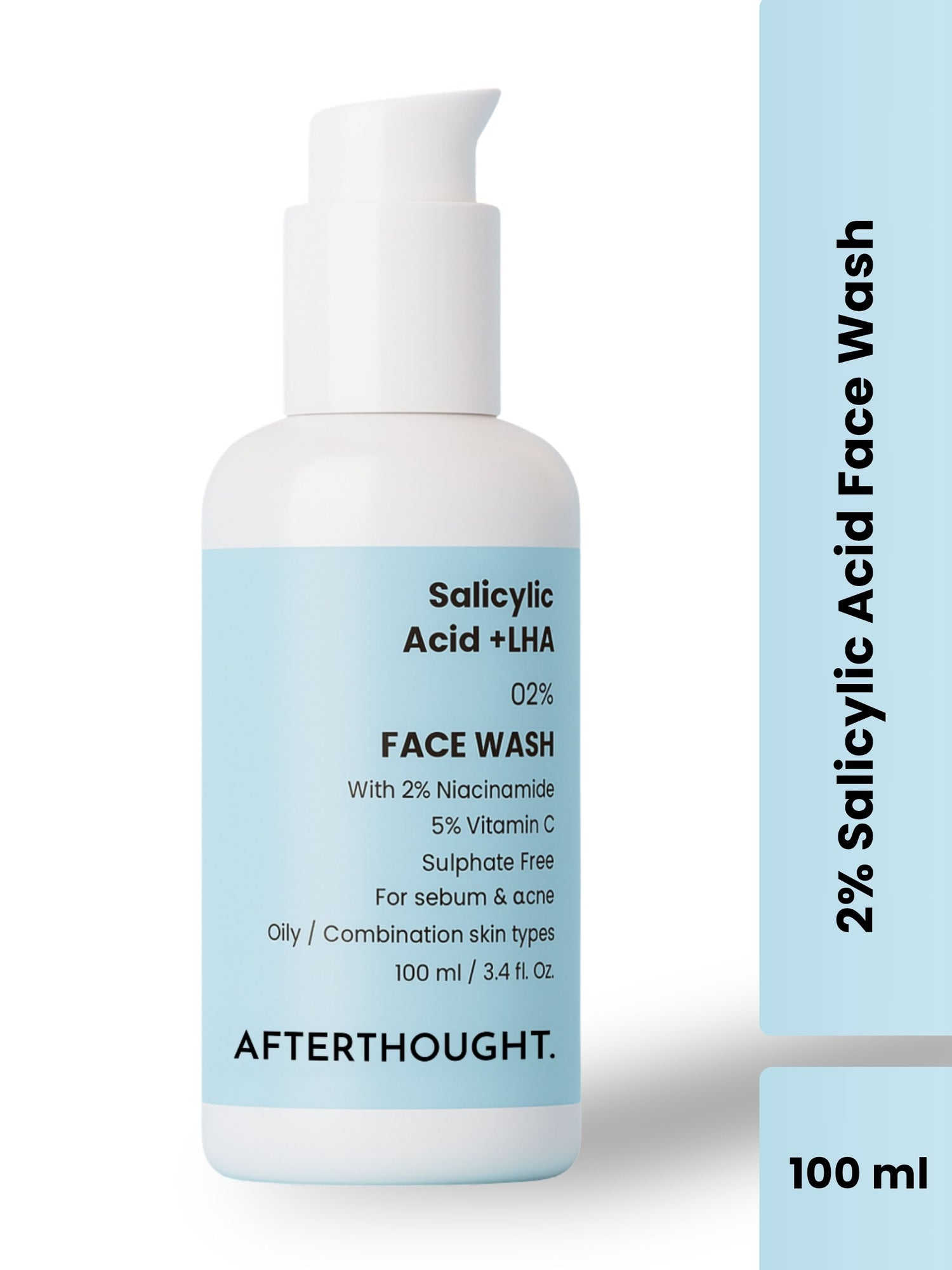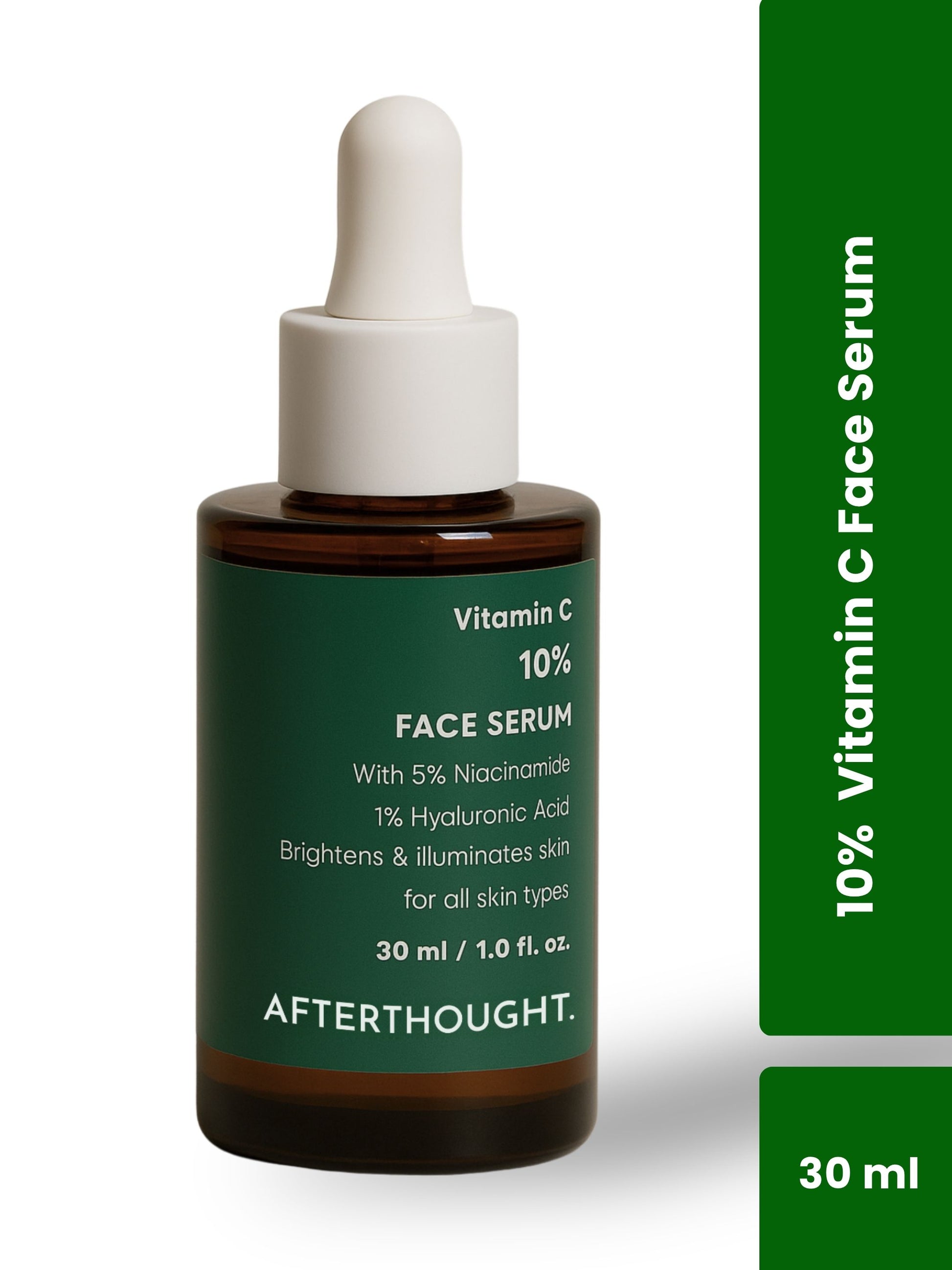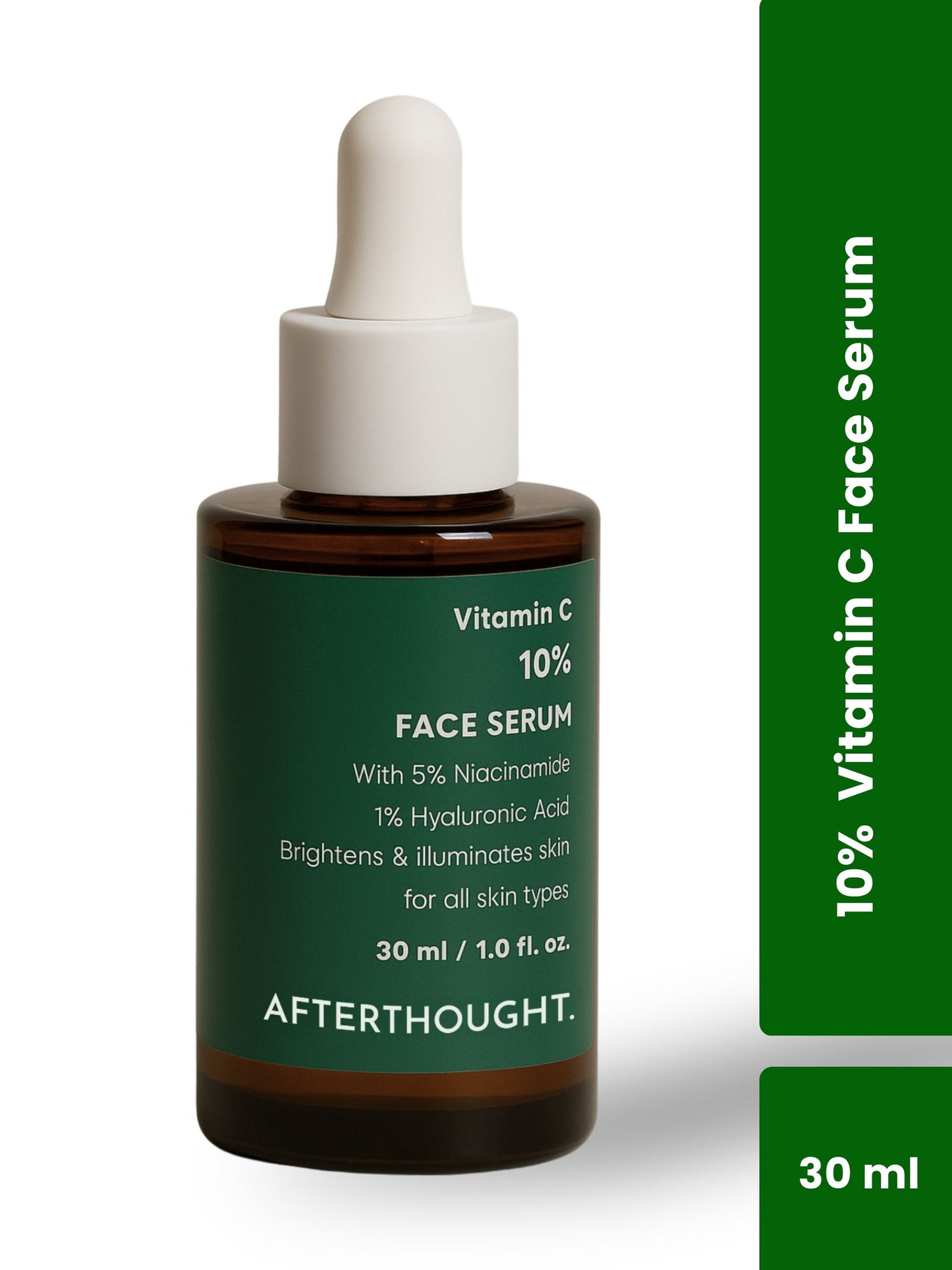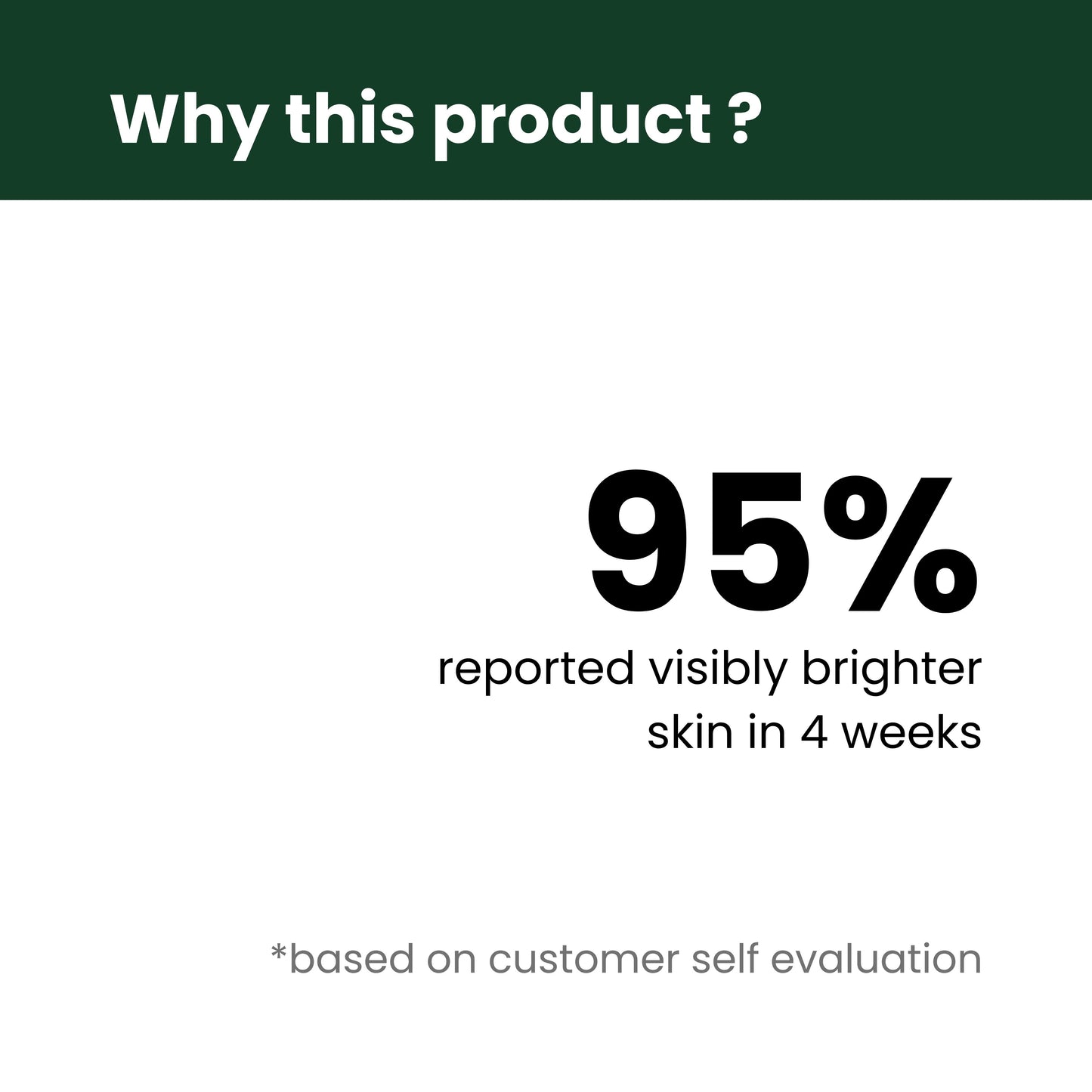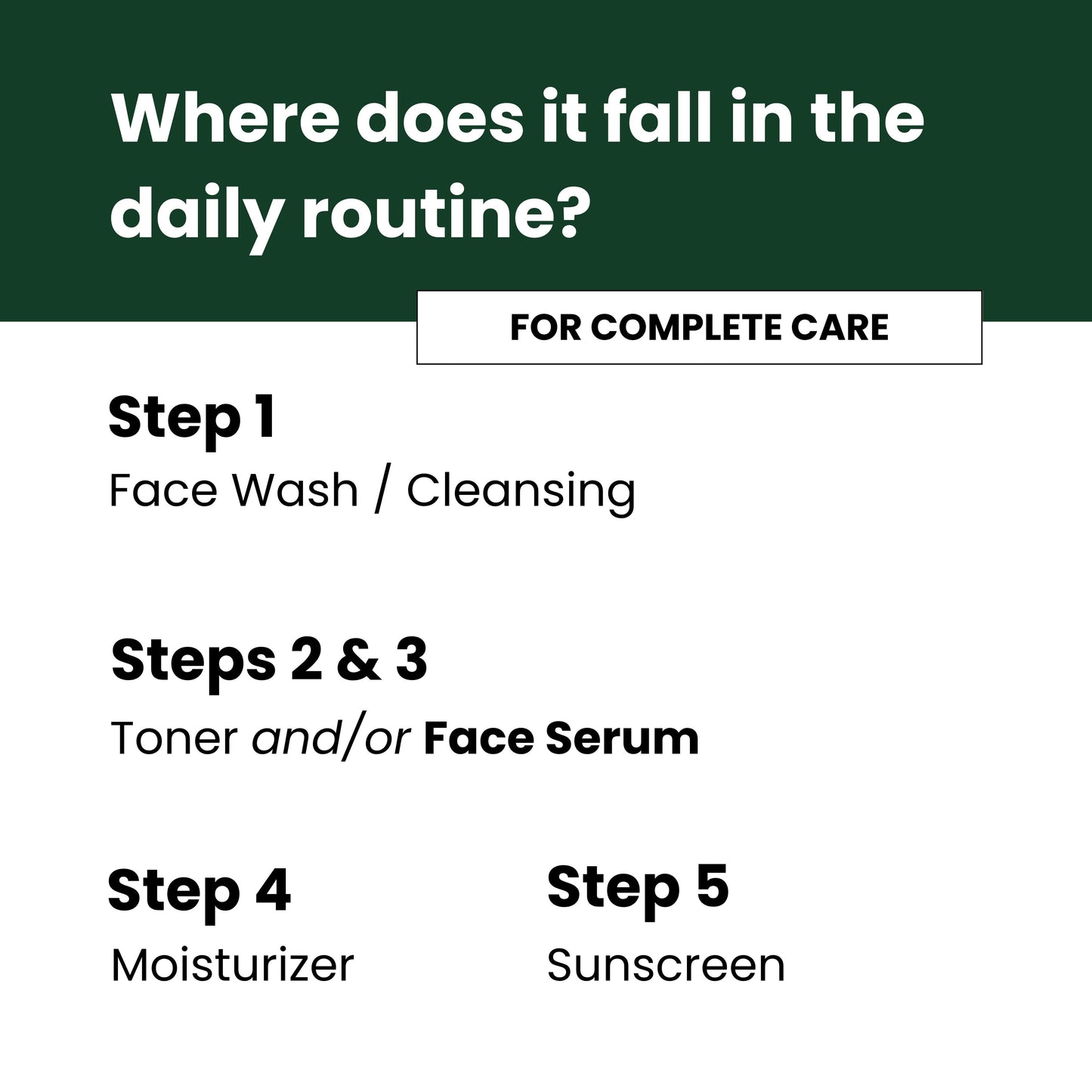How To Apply Salicylic Acid Serum On Face?
Salicylic acid, a beta hydroxy acid (BHA), is a powerhouse ingredient in skincare, renowned for its efficacy in treating acne, unclogging pores, and exfoliating the skin. Welcome to Afterthought.
To maximize its benefits and minimize potential side effects, it's essential to understand how to correctly incorporate salicylic acid serum into your skincare routine.
This comprehensive guide will walk you through everything you need to know about applying salicylic acid serum on your face.
Understanding Salicylic Acid
Before diving into the application process, it's crucial to understand what salicylic acid is and how it works. Derived from willow bark, salicylic acid is oil-soluble, which allows it to penetrate deep into the pores. It exfoliates the inside walls of the pores to fight inflammation and prevent future breakouts, making it particularly effective for individuals with oily and acne-prone skin.
Benefits of Salicylic Acid
- Exfoliation: It removes dead skin cells from the surface, promoting cell turnover and revealing fresher, brighter skin.
- Pore Cleansing: By dissolving sebum and debris inside the pores, it helps prevent blackheads and whiteheads.
- Anti-inflammatory: Reduces redness and swelling associated with acne.
- Comedolytic: Prevents the formation of new comedones (clogged pores).
Step-by-Step Guide to Applying Salicylic Acid Serum
Step 1: Preparation
- Patch Test: Always perform a patch test before using any new skincare product. Apply a small amount of the serum on a discreet area, such as the inside of your wrist or behind your ear, and wait 24-48 hours to ensure no adverse reactions occur.
- Cleanse Your Face: Start with a gentle cleanser to remove dirt, oil, and makeup. Opt for a sulfate-free, non-comedogenic cleanser to avoid stripping your skin of its natural oils.
Step 2: Application
- Dry Your Skin: Pat your face dry with a clean towel. Salicylic acid can penetrate better on dry skin, and applying it to damp skin might increase the risk of irritation.
- Dispense the Serum: Take a small amount of the serum, usually a few drops, depending on the product's concentration and your skin's tolerance.
- Apply Evenly: Using your fingertips, gently apply the serum to your face, focusing on areas prone to breakouts or congestion. Avoid the eye area and lips as these areas are more sensitive.
- Allow Absorption: Give the serum a few minutes to fully absorb into your skin before applying any other products. This ensures that the salicylic acid can work effectively without interference from other ingredients.
Step 3: Follow-Up Skincare
- Moisturize: Follow up with a non-comedogenic moisturizer to hydrate your skin. This step is crucial because salicylic acid can be drying, and maintaining your skin’s moisture barrier is essential.
- Sun Protection: Salicylic acid can make your skin more sensitive to the sun, so apply a broad-spectrum sunscreen with at least SPF 30 during the day. This step is non-negotiable to prevent sun damage and hyperpigmentation.
Frequency of Use
- Start Slow: Begin by using the serum once or twice a week to assess your skin's tolerance.
- Gradual Increase: If your skin reacts well, gradually increase the frequency to every other day or as recommended by your dermatologist.
- Observe Your Skin: Monitor your skin for any signs of irritation, such as redness, excessive dryness, or peeling. If these occur, reduce the frequency of use or consult with a skincare professional.
Additional Tips
- Consistency is Key: Regular use of salicylic acid can yield significant improvements in skin texture and clarity over time.
- Layering Products: When layering other active ingredients, be cautious. Avoid using salicylic acid with other strong exfoliants (like glycolic acid) or retinoids simultaneously, as this can increase the risk of irritation.
- Hydration: Ensure you maintain a well-rounded skincare routine that includes hydrating and soothing ingredients to balance the exfoliating effects of salicylic acid.
Potential Side Effects
While salicylic acid is generally well-tolerated, some individuals may experience side effects, including:
- Dryness and Peeling: If you experience these, reduce the frequency of application and increase your use of moisturizers.
- Irritation: Redness and burning can occur, especially if the concentration is too high for your skin type. In such cases, discontinue use and consult a dermatologist.
- Allergic Reactions: Although rare, some people may be allergic to salicylic acid. Symptoms include severe itching, swelling, or difficulty breathing, necessitating immediate medical attention.
Conclusion
Incorporating salicylic acid serum into your skincare routine can be transformative, particularly for those struggling with acne and congested pores. By following this detailed guide, you can harness the full benefits of this potent ingredient while minimizing potential side effects.
Remember, patience and consistency are key to achieving clear, healthy skin. Always listen to your skin and adjust your routine as needed to maintain balance and achieve optimal results.
